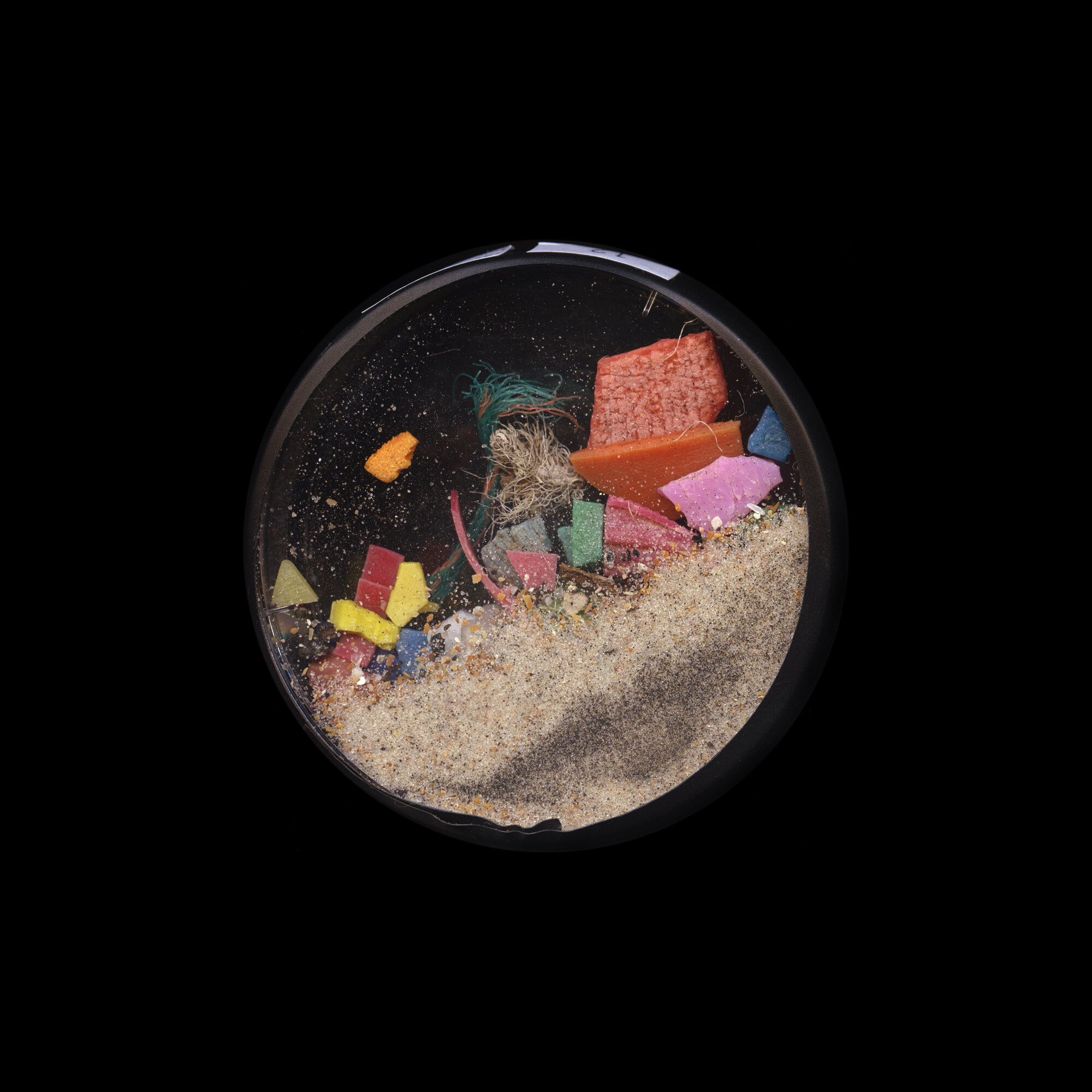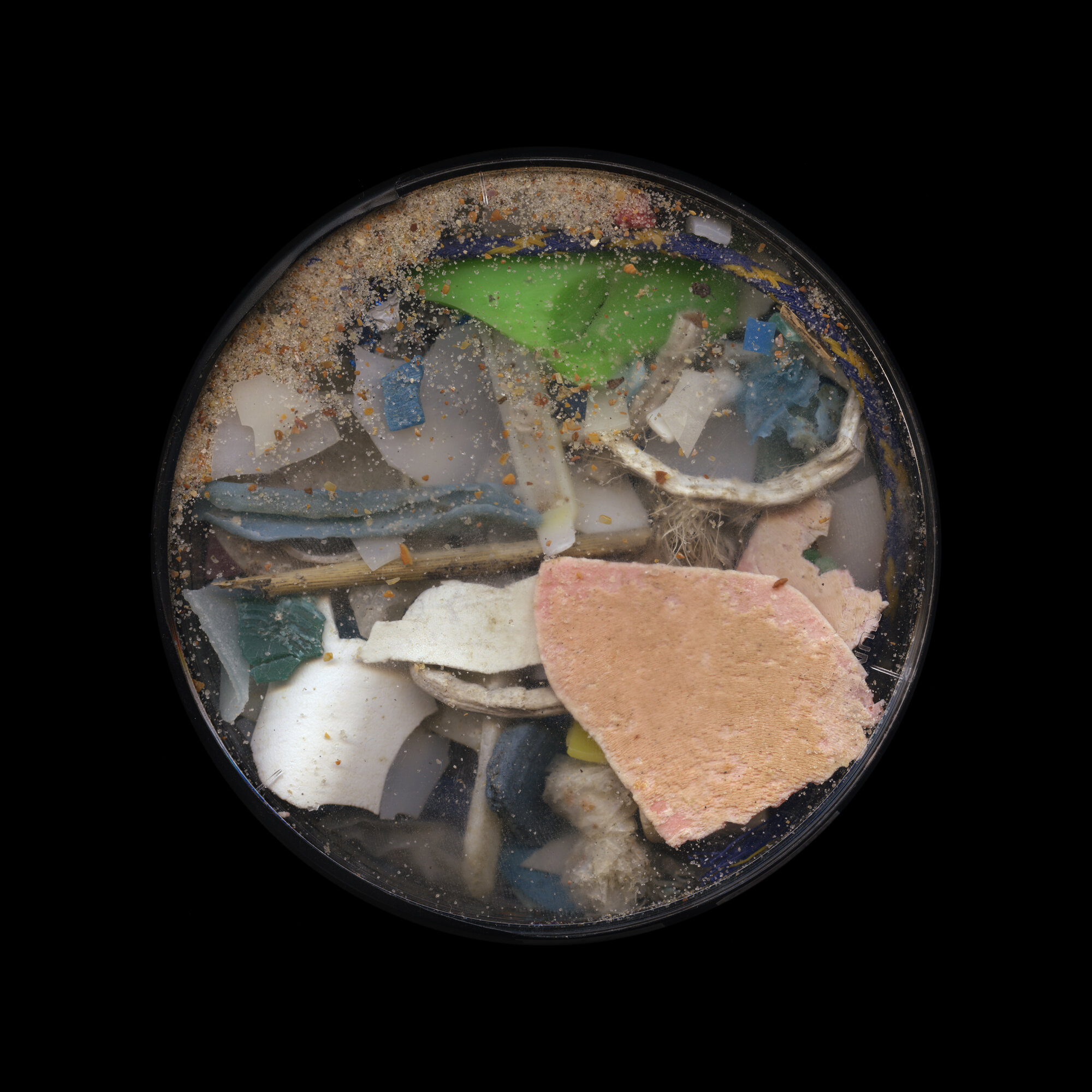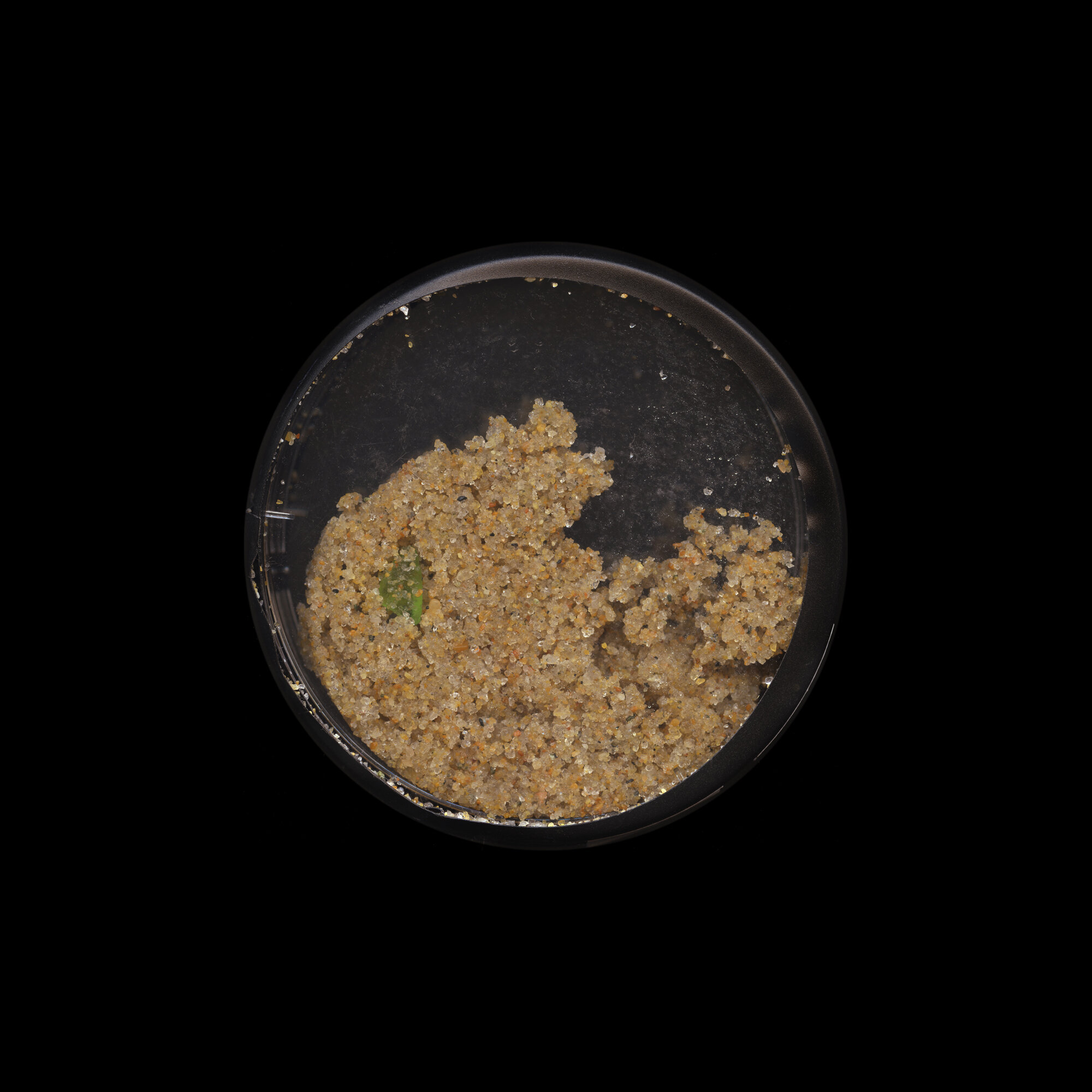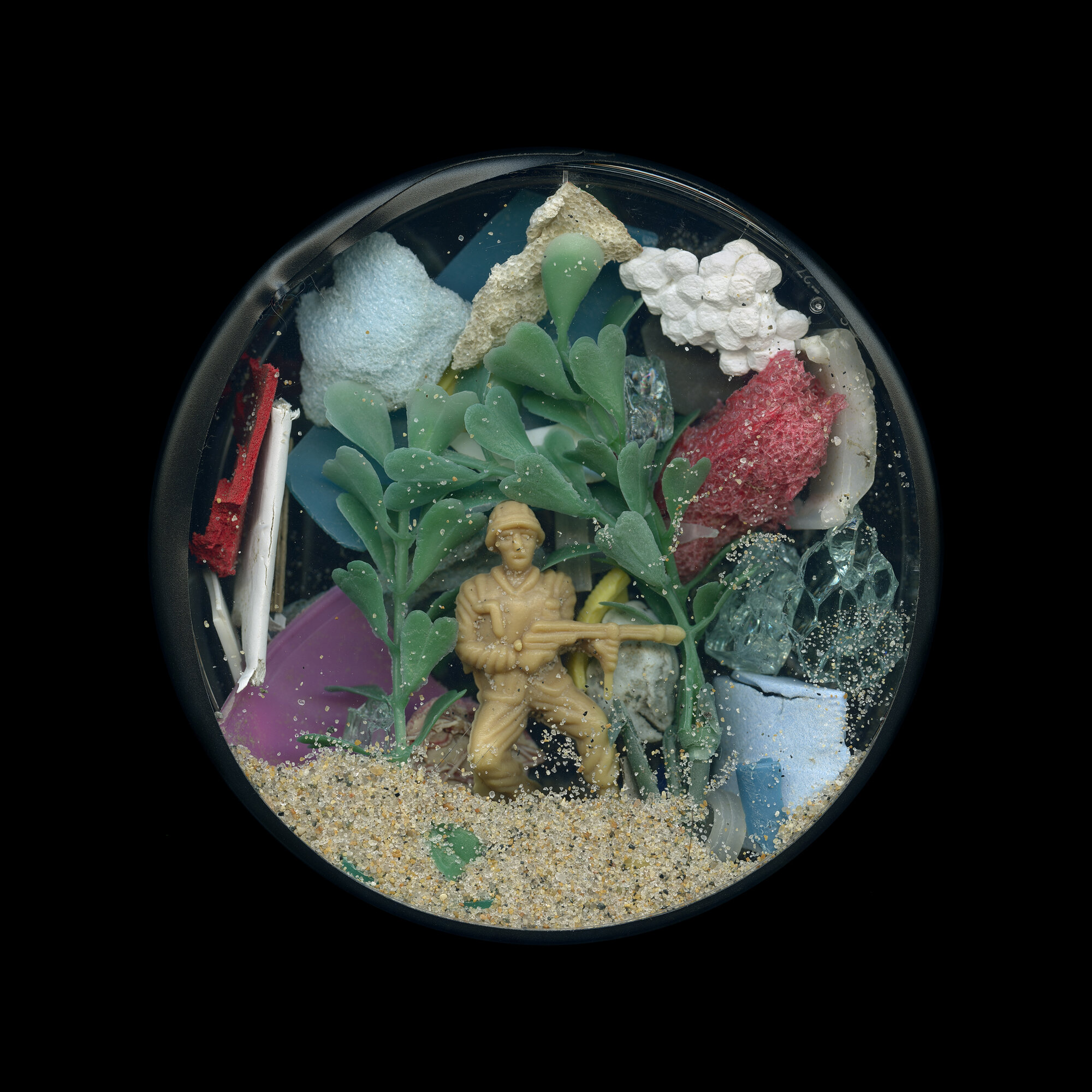Microplastics are a common headline in the news; each week brings new reports on plastic particles in our oceans, rivers, snow, and air. Yet how do we as the general public begin to understand these teeny tiny pieces? I believe in order to become invested in the minuscule pollutants; we need to physically see them. For my Sand and Plastic Collection, I mimic the tools, materials, and labeling used in scientific labs for artistic research on the tiny trash.
My collection follows a protocol: see a small plastic fragment, scoop the sand and native particles along with the synthetic piece into a petri dish, chart the latitude and longitude of the sample, and numerically label it. Collaborating with researchers and scientists opened my eyes to the importance of classifying the unrecognizable plastics. Once the original material is identified, the information can help inform policies and new source manufacturing. There is also a need to understand where the contaminates are ultimately ending up, making the environmental location extremely important. Sand and Plastic Collection combines visually engaging imagery with scientific materials and protocols, giving viewers entry points into pollution and microplastic research.



















































